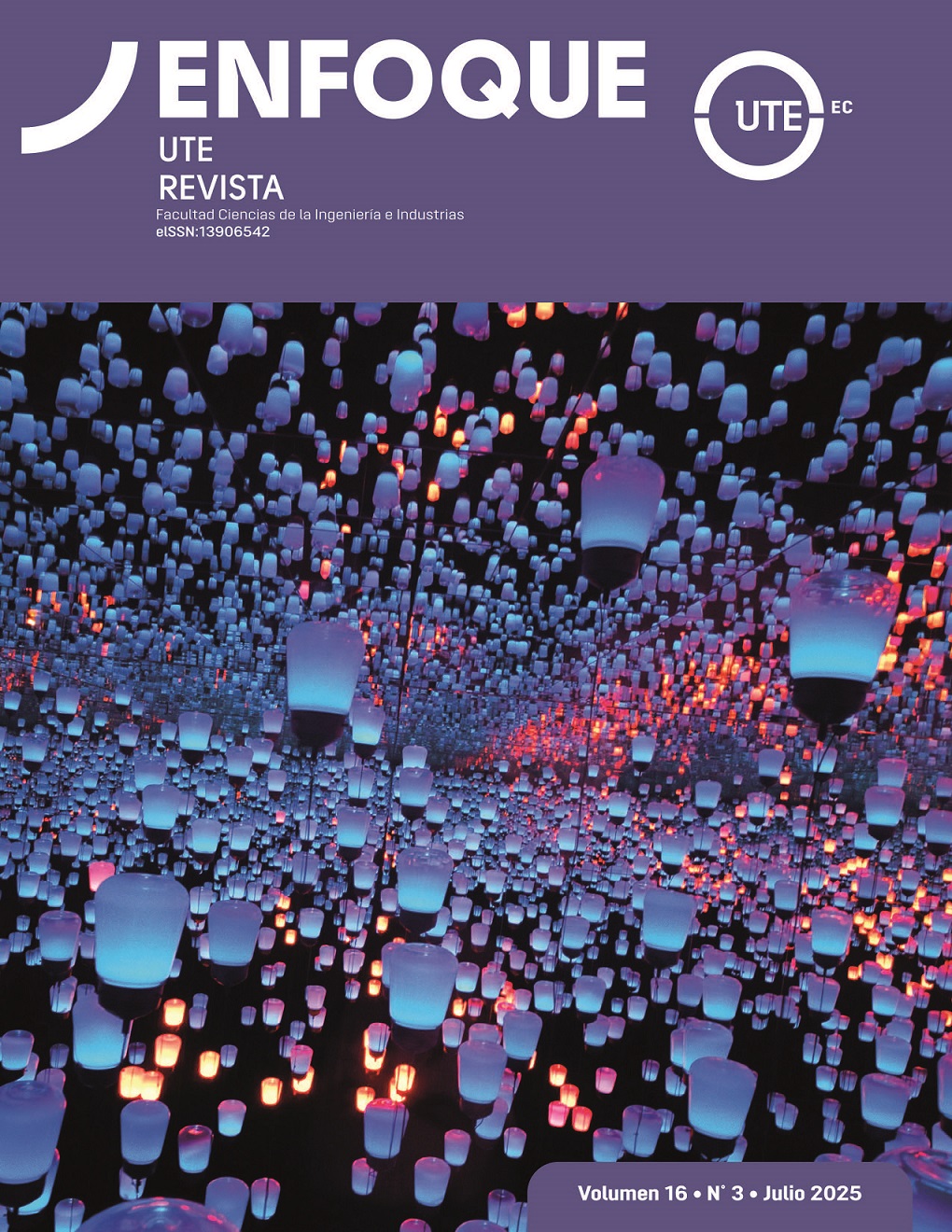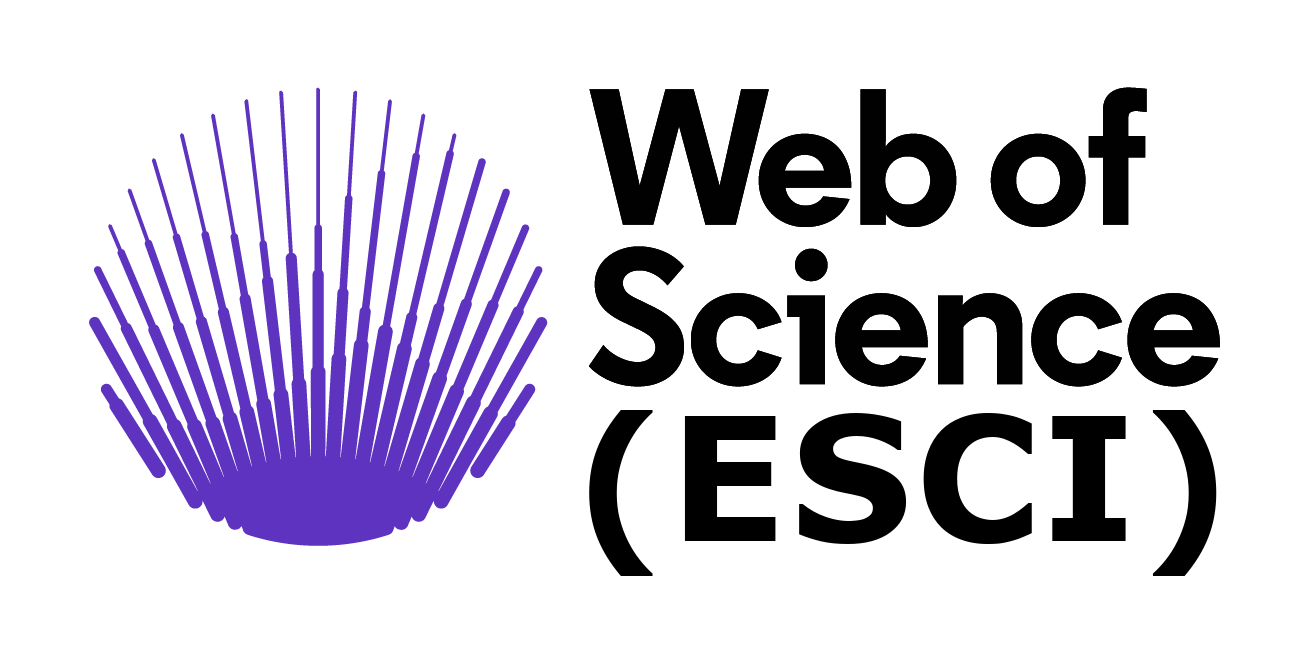Evaluation of weed control techniques in Schizolobium parahyba plantations: Impact on sustainable natural regenerationEvaluación de técnicas de control de malas hierbas en plantaciones de Schizolobium parahyba: Impacto en la regeneración natural sostenible
DOI:
https://doi.org/10.29019/enfoqueute.1128Keywords:
Schizolobium parahyba, dasometric variables, seedling survival, weeds, sustainable natural regenerationAbstract
The study evaluated the initial growth of Schizolobium parahyba under different weed control techniques, both crown and parallel. A 2A × 3B completely randomized block design was used, where A represents the distribution of vegetative material (around the canopy and parallel to the planting lines) and B the canopy radius (50 cm, 75 cm and 100 cm). Twelve treatment plots and one control plot were established. Height, diameter, number of leaves and survival were measured from the second month onwards, with a periodicity of 30 days. Among the findings. Survival did not depend on the radius or distribution of the material, since the control plot did not show the lowest yield. It is noteworthy that weed control favored growth, being the treatment with 50 cm crowns and vegetative material around them the one that obtained the best results in all the variables analyzed.
Downloads
References
[1] M. I. Castro Cordeiro, M. C. M. Oliveira Jr, A. B. Gazel Filho, P. L. C. Barros and O. A. Oliveira, “Crecimiento del Schizolobium parahyba subesp. amazonicum cultivado en presencia de Ananas comosus subesp. Erectifolius en Pará, Brasil,” Agrociencia, vol. 50, no. 1, pp. 79-88. 2016.
[2] G. M. Olmedo, C. Fontana and J. M. Oliveira, “Primary and secondary growth phenology of Schizolobium parahyba (Vell.) Blake at different time scales,”. Dendrochronologia, vol. 72. 2022. https://doi.org/10.1016/J.DENDRO.2022.12592
[3] F. M. Benitez Romero, T. de Nazaré Oliveira Novais, L. A. G. Jacovine, E. B. Bezerra, R. B. de Castro Lopes, J. S. de Holanda, E. F., Reyna and P. M. Fearnside, “Wood basic density in large trees: impacts on biomass estimates in the Southwestern Brazilian Amazon. Forests, vol. 15, no. 5, 2024. https://doi.org/10.3390/F15050734
[4] C. Valarezo, M. A. Villamagua, R. M. Mora, H. Maza, W. Wilcke and C. Nieto, “Respuesta del pachaco (Schizolobium parahybum vell. conc) y la melina (Gmelina arbórea roxb.) a la aplicación de biocarbón y fertilización en el sur de la Amazonía ecuatoriana,” Bosques Latitud Cero, vol. 6, no. 1, pp. 77-89, 2017. Available: https://revistas.unl.edu.ec/index.php/bosques/article/view/183
[5] R. Akter, M. K. Hasan, K. H. Kabir, D. Darr and N. A. Roshni, “Agroforestry systems and their impact on livelihood improvement of tribal farmers in a tropical moist deciduous forest in Bangladesh,” Trees, Forests and People, vol. 9, 2022. https://doi.org/10.1016/J.TFP.2022.100315
[6] Y. L. de O. Salomón, J. Georgin, D. S. P. Franco, M. S. Netto, D. G. A. Piccilli, E. L. Foletto, C. Manera, M. Godinho, D. Perondi and G. L. Dotto, “Development of activated carbon from Schizolobium parahyba (guapuruvu) residues employed for the removal of ketoprofen,” Environmental Science and Pollution Research, vol. 29, no. 15, pp. 21860-21875, 2022. https://doi.org/10.1007/s11356-021-17422-5
[7] L. A. B. de Oliveira, G. S. Alves, C. L. P. Resende, D. D. C. Carvalho and F. Rodrigues, “Schizolobium parahyba var. amazonicum seedling growth by Trichoderma spp. strains under nitrogen rates. Bioscience Journal, vol. 40, 2024. https://doi.org/10.14393/BJ-V40N0A2024-63032
[8] M. I. C. C. Cordeiro, A. B. G. Filho, O. A. Lameira and L. de A. Coimbra, “Eco-physiological evaluation of provenances of Schizolobium parahyba subsp. amazonicum in the moltingstage and its growth in the field,” Research, Society and Development, vol. 10, no. 1, pp. e12410111551-e12410111551, 2021. https://doi.org/10.33448/RSD-V10I1.11551
[9] D. Minini, C. Amaral Reis, D. de Moura Borges Maria, K. Pontes Teixeira das Chagas, T. R., da Silva Lins, P. H. Gonzalez de Cademartori, G. Baptista Vidaurre and S. Nisgoski, “A review on the quality of wood from agroforestry systems,” Agroforestry Systems, vol. 98, no. 3, pp. 715-737, 2024. https://doi.org/10.1007/S10457-023-00941-0
[10] D. Piotto, E. Víquez, F. Montagnini and M. Kanninen, “Pure and mixed forest plantations with native species of the dry tropics of Costa Rica: a comparison of growth and productivity,” Forest Ecology and Management, vol. 190, no. 2-3, pp. 359-372, 2004. https://doi.org/10.1016/J.FORECO.2003.11.005
[11] J. O. R. Matos, D. de C. Mariano, Ângelo A. Ebling, C. F. de Oliveira Neto, I. de J. M., Viégas and R. S. Okumura, “Crescimento e qualidade de mudas de Schizolobium parahyba var. amazonicum em substratos fertilizados,” Revista Em Agronegócio E Meio Ambiente, vol. 16, no. 3, pp. 1-12. https://doi.org/10.17765/2176-9168.2023v16n3e11221
[12] M. I. C. C. Cordeiro, A. B. Gazel Filho, O. A., Lameira and L. De A. Coimbra, “Eco-physiological evaluation of provenances of Schizolobium parahyba subsp. amazonicum in the moltingstage and its growth in the field,” Research, Society and Development, [S.l.], v. 10, n. 1, p. e12410111551, 2021. https://doi.org/10.33448/rsd-v10i1.11551. Accessed: 11 mar. 2025. Available: https://rsdjournal.org/index.php/rsd/article/view/11551.
[13] M. Carranza-Patiño, Y. Laz-Vera, R. J. Herrera-Feijoo, E. Jiménez-Romero, Á. Cedeño-Moreira and C. Chicaiza-Ortiz, “Plant growth-promoting rhizobacteria: a promising strategy to optimize the development of schizolobium parahyba,” Revista de Gestao Social e Ambiental, vol. 18, no. 4, 2024. https://doi.org/10.24857/RGSA.V18N4-138
[14] L. F. Silva Dionisio, J. N. de Sousa, H. D. dos Santos, C. de Almeida Milhomem, A. da Silva and J. C. de Oliveira Junior, “Emergence and initial growth of Schizolobium parahyba var. amazonicum as a function of sowing depth in the amazon biome | Emergência e crescimento inicial de Schizolobium parahyba var. amazonicum em função da profundidade de semeadura no bioma amazônico,” Revista Brasileira de Ciencias Agrarias, vol. 17, no. 4. 2022. https://doi.org/10.5039/agraria.v17i4a2298
[15] F. Meza Bone, J. Cachipuendo Castillo and W. Garcia Cox, “Calidad de plántulas de Schizolobium parahyba (Vell.) S.F. Blake bajo diferentes niveles de sombra en fase de vivero,” Agrosilvicultura y Medioambiente, vol. 2, no. 2, 2025. Available: https://revistas.unesum.edu.ec/agricultura/index.php/ojs/article/view/48
[16] A. Sales, A. Xavier, H. N. Paiva, I. Wendling, G. A. dos Santos, M. A. Siviero and S. B. Vieira, “Vegetative propagation of Schizolobium parahyba var. amazonicum (paricá) using field grafting and mound layering techniques” [Propagação vegetativa de Schizolobium parahyba var. amazonicum (paricá) usando técnicas de enxertia e mergulhia de cepa], Acta Amazonica, vol. 54, no. 4, 2024. https://doi.org/10.1590/1809-4392202301262
[17] M. F. Mendes, B. V. Félix, I. Isernhagen, A. B. baldoni, Tardin, P. C. Flôres Júnior, A. de A.Tsukamoto Filho and L. C. de Moura, Propagação in vitro de Schizolobium parahyba var. Amazonicum. Contribuciones a las Ciencias Sociales, vol. 17, no. 7, p. e8283, 2024. https://doi.org/10.55905/revconv.17n.7-131
[18] CONAFOR (Comisión Nacional Forestal), “Manual básico de Practicas de reforestación”. Coordinación General de Conservación y Restauración. Comisión Nacional Forestal. México. 66p. 2010.
[19] H. J. Keselman and J. C. Rogan, “The Tukey multiple comparison test: 1953-1976,” Psychological Bulletin, vol. 84, no. 5, pp. 1050-1056, 1977. https://doi.org/10.1037/0033-2909.84.5.1050
[20] J. Villava, “Efecto de diferentes niveles de interferencia en la fila de plantación en parámetros de crecimiento de Eucaliptus grandis en Uruguay,” Sci. For., Piracicaba, vol. 46, n. 119, pP. 473-482, set. 2018. https://doi.org/10.18671/scifor.v46n119.14
[21] J. C. Calvo-Alvarado, D. Arias and D. D. Richter, “Early growth performance of native and introduced fast growing tree species in wet to sub-humid climates of the Southern region of Costa Rica,” Forest Ecology and Management, vol. 242, no. 2-3, pp. 227-235, 2007. https://doi.org/10.1016/j.foreco.2007.01.034
[22] L. E. L. Melo, C. J. Silva, T. P. Protásio, G. S. Mota, I. S. Santos, C. V. Urbinati, P. F. Trugilho and F. A. Mori, “Planting density effect on some properties of Schizolobium parahyba wood,” Maderas: Ciencia y Tecnología, vol. 20, no. 3, pp. 381-394, 2018. https://doi.org/10.4067/S0718-221X2018005003901
[23] F. Panduro, “Preparación del sitio de plantación para Schizolobium parahybum (Vell) S.F. Blake, (pashaco)-2014”. Escuela de Formación Profesional de ingeniería Forestal. Iquitos-Perú. 2014.
[24] C. Borda, “Efecto del control de malezas con herbicida y métodos mecánicos en el crecimiento inicial de Cedrela odorata L”. Universidad Nacional del Centro del Perú. Facultad de Ciencias Forestales y del Ambiente. Huancayo- Perú. 2019.
[25] L Quiroz, E. García, M. Gonzales, P. Chung and H. Soto, “Vivero Forestal: Producción de plantas nativas a raíz cubierta”. INFOR. Concepción-Chile. 2009.
Downloads
Published
Issue
Section
License
Copyright (c) 2025 Stephanny Hillary Briones Zambrano, Jorge Manuel Jara Minalla, Víctor Trajano Gallo Fonseca, Juan Ruben Briones Magallanes, Fabricio Rolando Marcillo Vera

This work is licensed under a Creative Commons Attribution 4.0 International License.
The authors retain all copyrights ©.
- The authors retain their trademark and patent rights, as well as rights to any process or procedure described in the article.
- The authors retain the right to share, copy, distribute, perform, and publicly communicate the article published in Enfoque UTE (for example, post it in an institutional repository or publish it in a book), provided that acknowledgment of its initial publication in Enfoque UTE is given.
- The authors retain the right to publish their work at a later date, to use the article or any part of it (for example, a compilation of their work, lecture notes, a thesis, or for a book), provided that they indicate the source of publication (authors of the work, journal, volume, issue, and date).
























